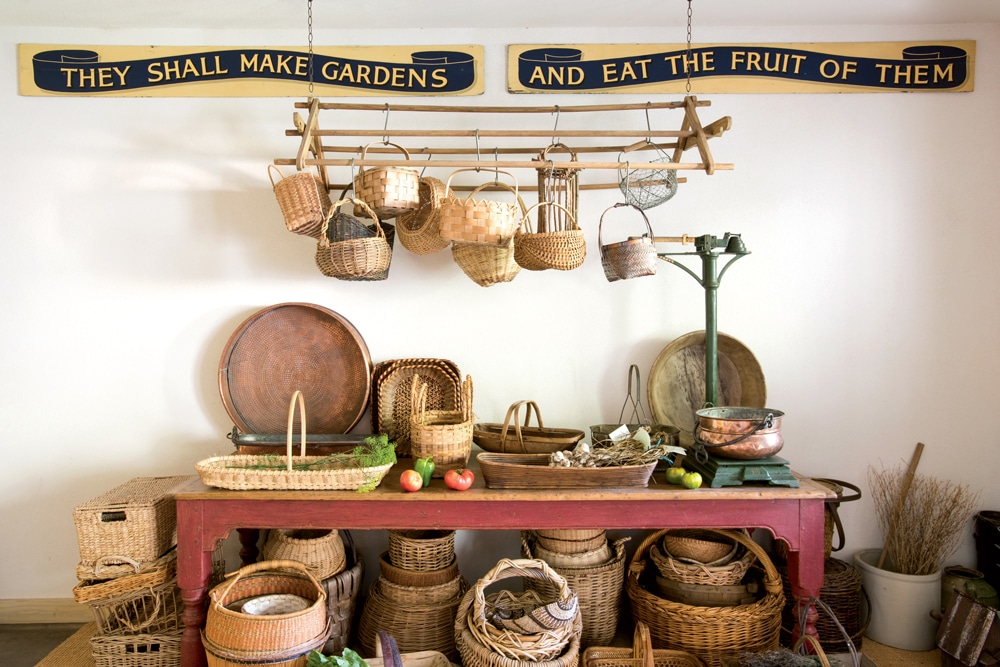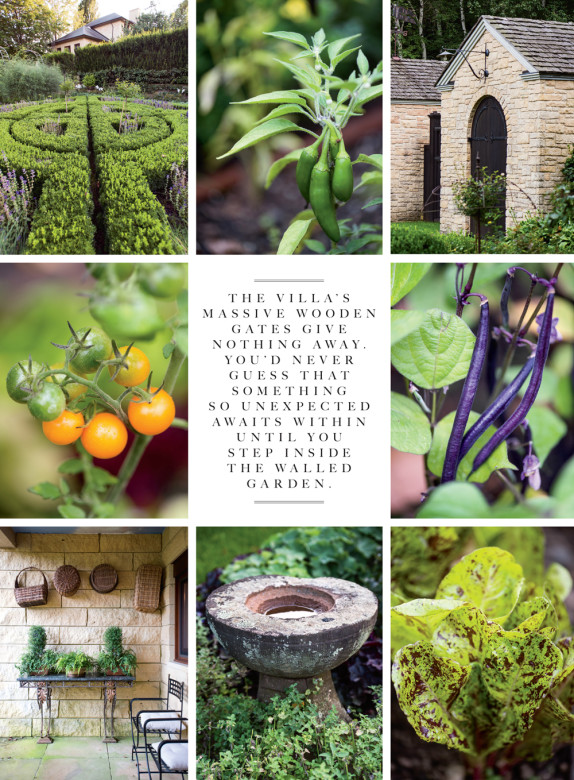The Prettiest Vegetable Garden in New England
There’s a garden overlooking the rolling hills of Litchfield County, Connecticut, that is literally scrumptious. At the estate called Highmeadows, rows of plantings spill over with succulent Fiero radicchio, Gigante degli Ortolani escarole, Diablo Brussels sprouts, and dozens of other vegetables planted to form a deep tapestry of color and texture. Purple basil flanks tomatoes, […]
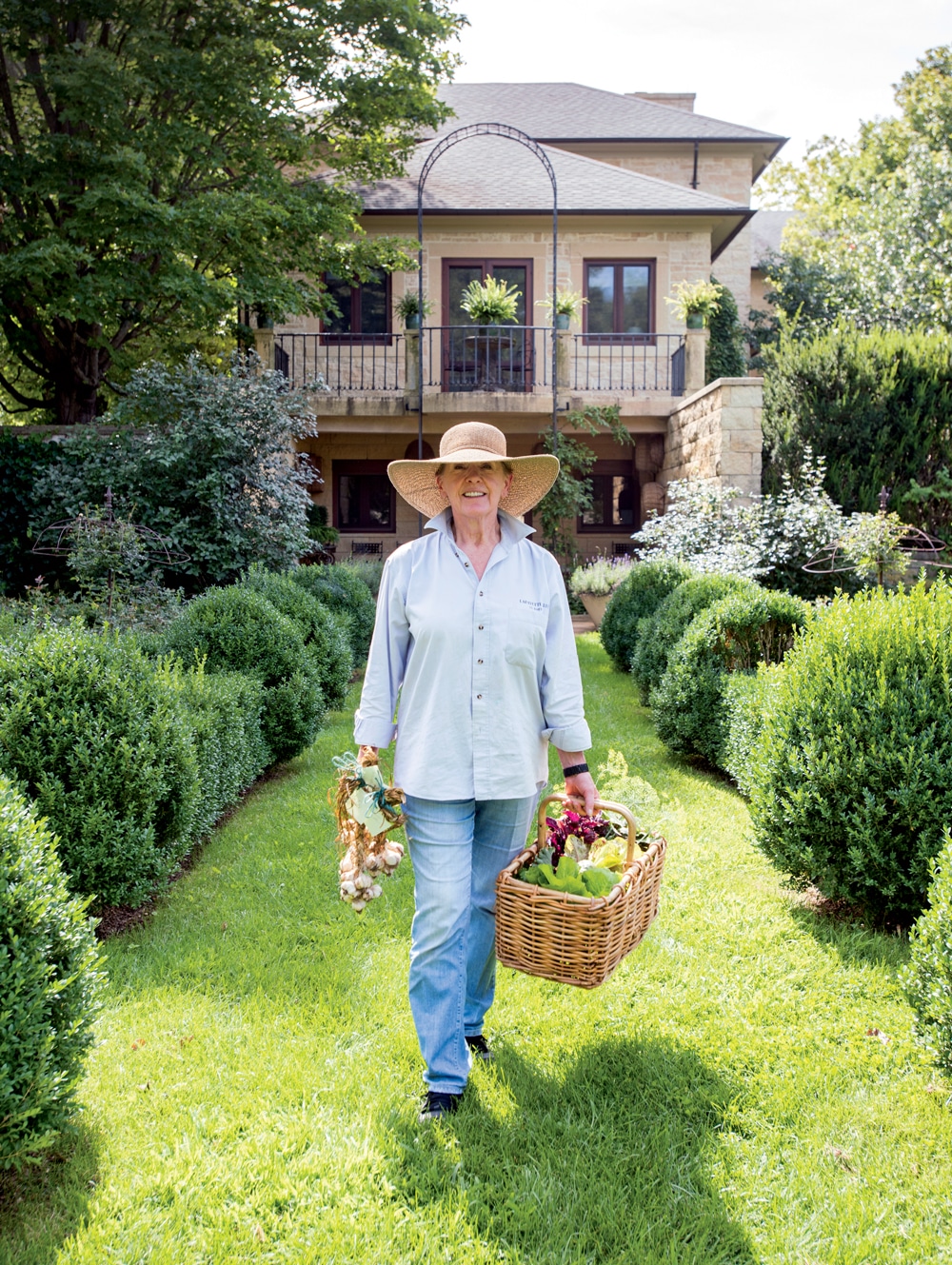
Though she once dreaded the thought of tending a garden, Linda Allard today embraces working the soil at Highmeadows, her home in Connecticut’s Litchfield hills.
Photo Credit : Kindra Clineff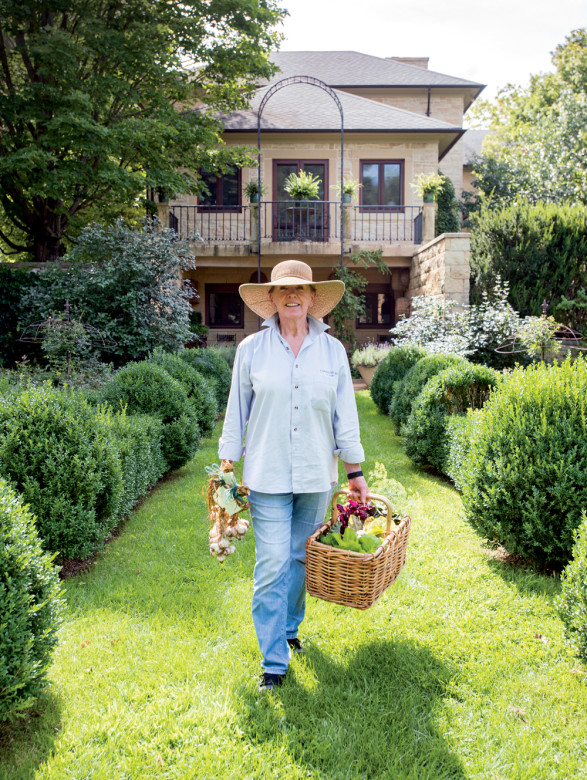
Photo Credit : Kindra Clineff
There’s a garden overlooking the rolling hills of Litchfield County, Connecticut, that is literally scrumptious. At the estate called Highmeadows, rows of plantings spill over with succulent Fiero radicchio, Gigante degli Ortolani escarole, Diablo Brussels sprouts, and dozens of other vegetables planted to form a deep tapestry of color and texture. Purple basil flanks tomatoes, sage pops up between interwoven boxwood, scarlet runner beans climb tepees, and rose arbors drip with aromatic petals. Leave it to Linda Allard to show us that vegetable gardens can be absolutely fabulous while still working hard.
Non-fashionistas might not recognize the name. Credited with spearheading the trend to dress women for success in corporate America, Allard was the chief designer for Ellen Tracy from 1964 until 2003, when she retired to Highmeadows. On the home front, she’s applied all her design sensibilities to the garden. But she’s also introduced literal taste into her patterns—who would have even guessed that underneath that wonderful wardrobe lurked a foodie?
It all started with 4-H. Growing up in Doylestown, Ohio, Allard and her five brothers and sisters lived in an old farmhouse, which had a huge garden to feed the family. “We canned, froze, and made jam,” she recalls. In addition, her mother led the local 4-H, so the whole family—including Allard’s brothers—learned to cook and sew. Exhibiting pies and canned goods in the county fair was a highlight of Allard’s summers. Weeding the garden was not. “I swore I would never, ever have a garden,” she says.
When Allard won an art scholarship to Kent State, it seemed as though she had safely sidestepped gardening. A year after she graduated, her parents put her on a bus for New York City with $200 to start a career. Within three weeks, she’d begun her ascension from assistant to sample maker to, eventually, Ellen Tracy’s lead designer.
By the time she started work on Highmeadows’ garden, though, Allard had accumulated a worldly knowledge of homes and their surroundings. “Whenever I had a free day while traveling, I went to see gardens,” she says. Plus, she’d done a flip-flop on her anti-gardening stance. In fact, after buying her 75-acre Connecticut property in 1989, she chose to build her home on a high, exposed site specifically because it basks in full sun—and that’s what edibles crave. From her trips to Europe, she saw how beautifully it could be laid out. And that’s when she asked her brother David Allard, an architect, to design her villa, with a vegetable garden being intrinsic to the picture.
From the exterior, David’s house design bears a pinch-me resemblance to a Venetian villa. But he also took New England’s sun exposure and brutal winters into account. Since the villa runs along the crest of the hill, each room gathers light as the sun moves across the sky: It rises over Allard’s bedroom, which overlooks the garden, and it sets over the conservatory room.
The configuration is a testimony to Allard’s current priorities. In the west-facing conservatory room, all the furniture is periodically removed to make way for collapsible tables, where hundreds of seedlings get a head start for the garden in late winter and early spring. Under it all is a basement where root crops are stored, harvest is brought in, and muddy clogs are kicked off before Allard comes upstairs to the rest of the house. And muddy clogs have become a major part of her life.
What would a villa be without its corresponding gardens? For Allard’s purposes, edibles seemed the appropriate way to go, but on a practical level, protecting a vegetable garden from animal pests was a concern. That’s when her brother came up with the tall stone wall that creates the medieval mood. To underline the ambience, he had all the hinges and lighting fixtures hand-forged at a nearby abbey. From there, the two siblings got out the rototiller and began to plan the layout.
Fashion design had taught Allard to start with a pattern template. Rather than install umpteen boxwoods right off the bat, for instance, she planted bush beans to visualize the hedge design. Then she planted morning glories on what would be rose trellises and sat back to see if the dimensions worked. They didn’t. “The arbor wasn’t spacious enough; the boxwoods were too close together,” she says. “It was such a valuable exercise.” So she reconfigured before installing the permanent boxwood parterre with lavender, thyme, sage, and other herbs growing between the evergreen edgings.
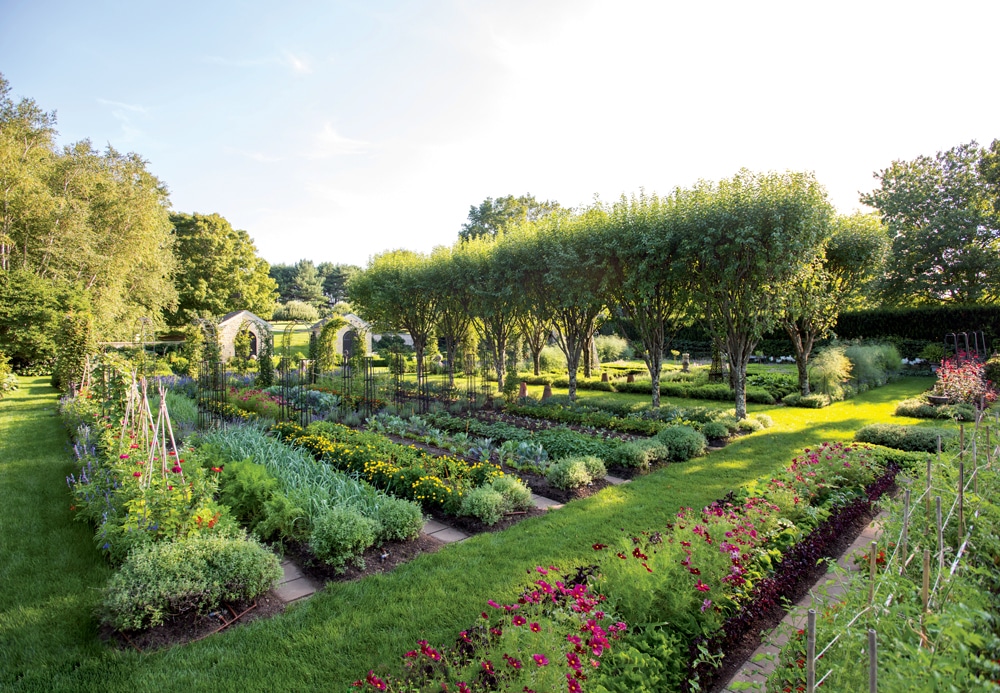
Photo Credit : Kindra Clineff
Across the aisle, the vegetable rotation changes every year. But even so, the spacing required tweaking before it was able to host several successions of beans, root crops, tomatoes, and all the other goodies that feed Allard’s table and her penchant for throwing parties.
To soften the wall and harness the heat it gathers, as well as to make the best use of space, she planted espaliered apple trees along the perimeter. But there’s also a full orchard on the hillside below the house, bearing her father’s favorite apples—Northern Spy, Winesap, and Ida Red—among other heirloom and modern varieties. The trees flank the wings of the house, with a huge meadow in the middle to lure pollinators.
Highmeadows’ massive burnished wooden gates give nothing away. Similarly, the high walls are alluringly secretive. You’d never guess that something so unexpected awaits within until you step inside the walled garden. Once you do, chances are you’ll find Allard herself, bent over the beds in her sun-faded denim work clothes, planting seeds or tying tomatoes onto their supports. She spends winters immersed in seed catalogs; in early spring she shares her living quarters (and sends her sofa to the basement) for the benefit of seedlings.
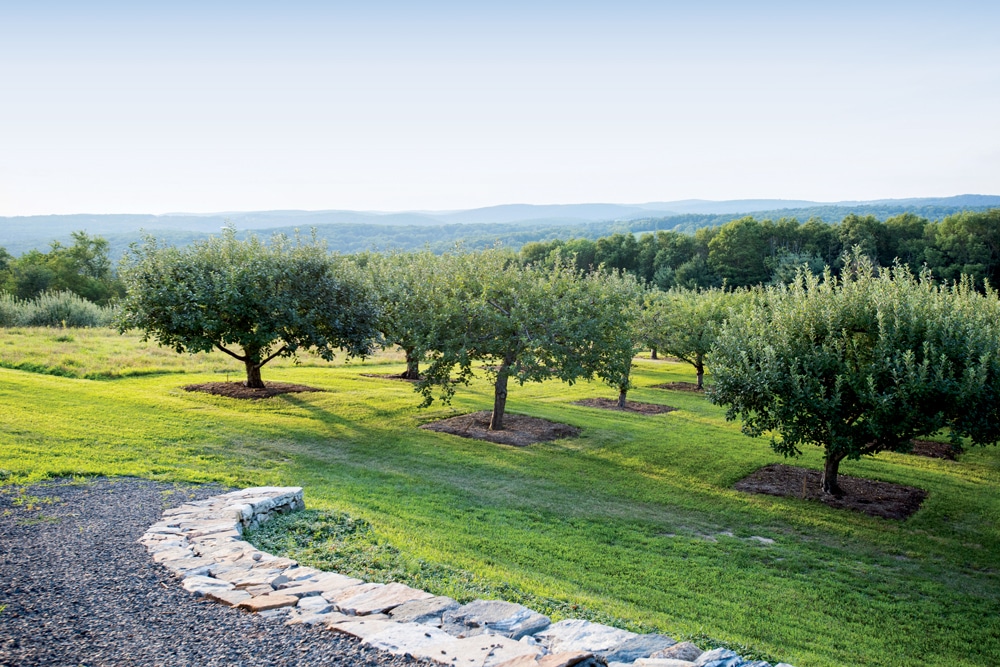
Photo Credit : Kindra Clineff
Yes, the colors are all coordinated. Of course, it’s absolutely gorgeous. But this garden is also hardworking. And when it’s all ripe, Allard cooks and cans up a storm, sharing excess from the orchard with local charities. More than just being a strong candidate for the most beautiful garden in New England, and beyond feeding the soul, this garden nurtures inside and out.
Do you know a house with an irresistible story? Contact Yankee home and garden editor Annie Graves, with photos, at annieg5355@yahoo.com.



